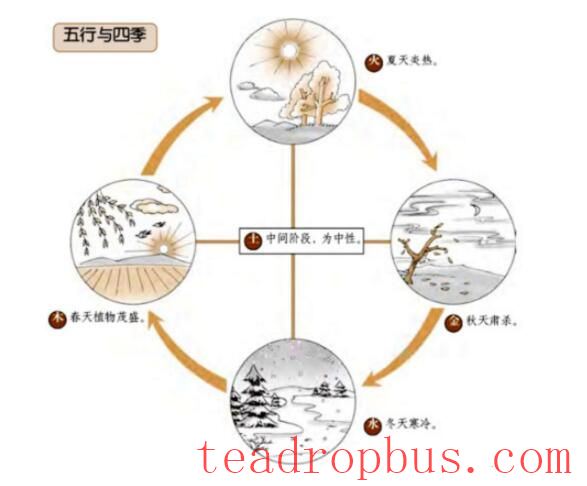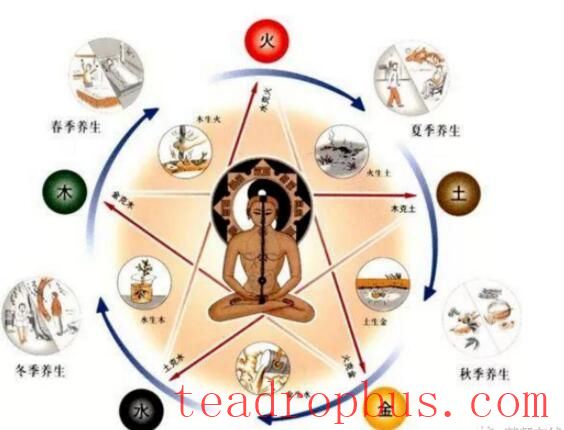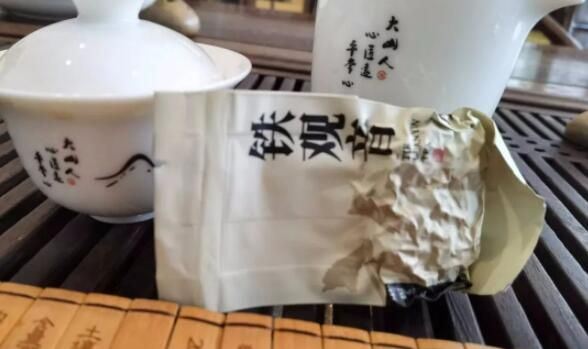As winter fades and spring arrives, the cycle of the four seasons continues. After the start of spring, the weather gradually warms up and all living things begin to revive, a process we refer to as the “spring sprouting.” According to the five elements, spring is associated with wood, in the Yijing it corresponds to lesser yang, and among the organs, it relates to the liver. The year begins in spring, and it is essential to nurture “Qi” (referring to blood and Qi) during this season. Therefore, Drinking Tea for health preservation is particularly important in spring. If one does not properly nurture their “life” and “Qi” in spring, and if there is insufficient lesser yang, then they will not be able to fully develop in summer, leading to a lack of yang and an inability to reach the state of greater yang, resulting in a deficiency of yang energy. Hence, it is crucial to drink tea well in spring and choose the right kind of tea to consume.
The overarching principle of health preservation in spring is to nourish the liver and protect the spleen and stomach. Otherwise, one may experience insufficient blood and Qi, as well as spring fatigue and depression. Thus, the work of health preservation in spring is very important. Why do we choose tea for health preservation? Tea has been traditionally known as fragrant leaves, and its aroma is crucial for nurturing “vital energy,” especially in terms of soothing the liver and promoting free flow of Qi, which is unmatched by other health-preserving beverages. Of course, tea has many other benefits, but we are focusing on its role in nurturing vital energy here.

From the perspective of the five elements, spring is associated with wood, water generates wood, and wood generates fire. Therefore, if we want to have strong yang energy in summer, we must nurture the wood of spring and ensure there is water. Consequently, we should drink more tea and water in spring to make our spring wood flourish. In terms of mutual overcoming, metal overcomes wood, and wood overcomes earth; metal represents irritability and dryness. To maintain good spirits, we need to control our emotions, but primarily, we should promote the smooth flow of Qi through the aroma of tea.
Since the winter solstice, yang energy increases, and spring is a critical period for transitioning from yang to lesser yang and eventually to greater yang. It is also the key time for forming greater yang, making the beginning of the year in spring particularly significant.

According to the theory of yin-yang balance and the five elements in traditional Chinese medicine, in spring, one must first soften, protect, and soothe the liver while nourishing blood; secondly, preparations for summer should focus on strengthening the spleen and stomach. During the sunny days of March, one should consider drinking fragrant beverages to boost morale, dispel accumulated cold within the body, and promote the generation of yang energy.
Based on the above considerations, combined with the characteristics and nature of tea, we recommend drinking the following types of tea.
Jasmine Tea
Jasmine tea is made by blending the basic aroma of tea with the fragrance of fresh flowers, creating a harmonious blend of tea and floral aromas. Its rich aroma can help drive out the cold and dampness within the body and promote the generation of yang energy. One can also consider Steeping dried flowers like jasmine or rose petals, which are particularly beneficial for women with a cold constitution, as they can invigorate qi and improve blood circulation, having a dual effect of warding off spring chills and nourishing blood and protecting the liver.

Teas with Good Aroma
Due to differences in growing environments and processing methods, teas have distinct aromas. In spring, it is suitable to drink teas with elegant, intense, fragrant, and pure aromas, such as seasonal spring teas, raw Pu'er teas with strong floral scents, or floral black teas. However, these teas should be chosen based on individual physical constitutions. For example, seasonal spring teas, which are usually green teas, white teas, or new Pu'er teas, tend to be cold-natured and may not be suitable for people with qi deficiency or a cold constitution. Instead, they should opt for Black Tea. On the other hand, black tea may not be suitable for those who are relatively hot in nature, who should instead drink green teas or raw Pu'er teas from the current season.
Oolong Tea Suitable for Most People
Oolong tea, a semi-fermented tea, has a mild nature and is suitable for consumption throughout the year. One of its notable features is its rich and refined floral aroma, making it perfect for both the growth of spring and the elimination of dryness in autumn. When unsure about what type of tea to choose, a cup of oolong tea is a suitable option. Especially those oolong teas with a highly refined and pure floral aroma are excellent choices for spring.
Oolong tea is a category of tea mainly produced in Fujian, with some production also occurring in Taiwan and Guangdong. The main production area is still Fujian. Fujian oolong tea is primarily divided into two categories: rock oolongs represented by Dahongpao, Rougui, and Shui Xian, which are charcoal-roasted; and fragrant oolongs represented by Tieguanyin, which are characterized by their floral aroma. Guangdong produces Phoenix Dancong, which combines the characteristics of both Fujian production areas and is famous for its diverse fragrances. Taiwanese oolongs come in various varieties and are processed based on the traditional techniques of Anxi Tieguanyin, mostly retaining the light and fragrant style.

In early spring, temperatures are still relatively low, so the lingering chill remains. The brisk spring cold is a characteristic of early spring, making it an important season for health preservation. The body consumes a large amount of nutrients, and energy reserves reach their lowest point of the year. Metabolism is vigorous, and liver fire is strong, causing restlessness and irritability. At this time, brewing a cup of fragrant, refreshing floral tea can not only refresh the mind and eliminate drowsiness but also help dispel the cold within the body and promote the growth of yang energy.
In late spring, temperatures continue to rise and occasionally become quite warm, especially as summer approaches. At this time, seasonal spring teas, particularly green or white teas made from young shoots, are ideal choices to drink.
The “Dietary Essentials” states: “In spring, when the weather is warm, it is advisable to eat wheat to cool the body.” Therefore, one should choose foods like mung bean soup, plum juice, and green tea to prevent the accumulation of internal heat.